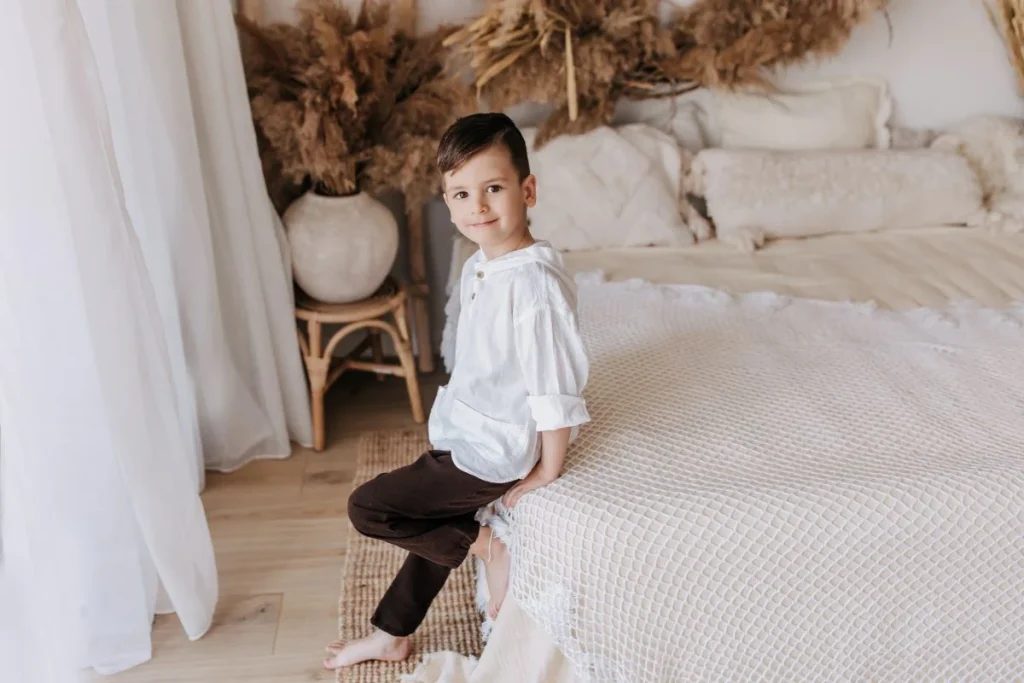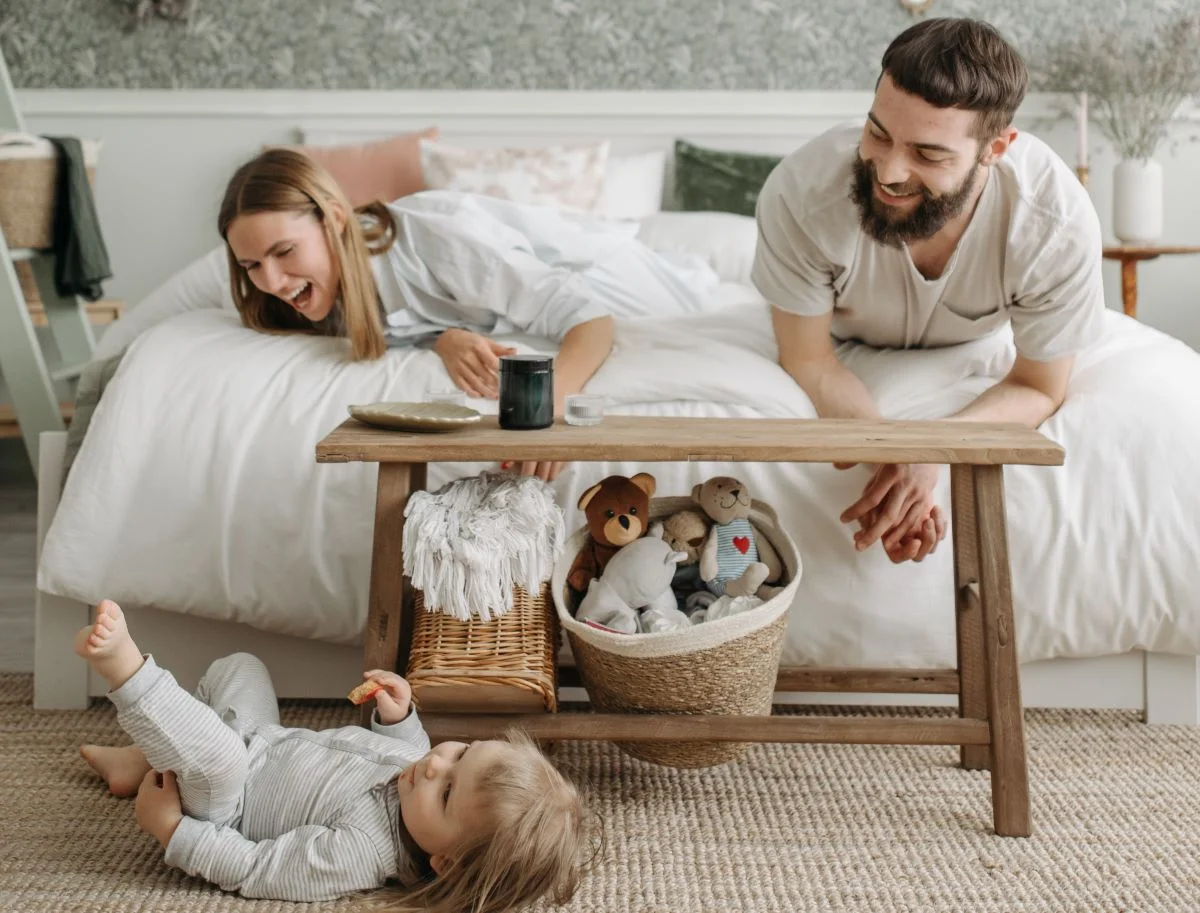Families seeking a calm vacation from the bustling city life find shelter in Tagaytay’s stunning settings, where lush foliage meets the azure skies. This calm environment is excellent for many parents to decompress, but for those with sensory-sensitive children, the move from the urban jungle to this serene refuge can be difficult. Creating sensory-friendly home spaces in your Condo in Tagaytay is about helping your child feel comfortable and secure in their surroundings. In this blog, we will look at how to turn your Condo in Tagaytay into a sensory-friendly haven that caters a children with specific needs, ensuring they thrive and find peace in this lovely environment.
Understanding Sensory Needs

Before delving into the details of building sensory-friendly home environments, it’s critical to first understand what sensory needs are and how they affect children. A child who has sensory processing issues may have increased or decreased sensitivity to numerous sensory inputs such as touch, hearing, sight, taste, and smell. These sensitivities can cause overstimulation or under-stimulation, which can result in anxiety, meltdowns, or withdrawal.
Consider bringing your toddler to your Tagaytay condo, which is full of unusual sounds, scents, and textures. While the tranquil surroundings may provide a respite from the city’s commotion, they may also present sensory issues for your youngster. As a result, building a sensory-friendly refuge within your apartment is critical.
Designing for Special Needs: Creating a Sensory-Friendly Bedroom for your child

A child’s bedroom is their sanctuary; it should make them feel protected, comfortable, and relaxed. There are numerous important elements to consider while constructing a sensory-friendly bedroom:
- Color Scheme: Begin by selecting a soothing color scheme. Soft, muted colors such as pastel blues, greens, or lavender can help to create a relaxing ambiance. Colors that are too bright or too exciting may create distress.
- Lighting: Lighting is important in sensory-friendly design. Invest in adjustable lighting that allows you to change the brightness. To reduce fear of the dark, use blackout curtains to keep the room dark before bedtime, and consider adding soft, warm-toned nightlights.
- Texture and Materials: It is critical to choose the proper materials for furniture and home design. Soft, sensory-friendly materials such as plush rugs, cotton beds, and velvet cushions should be used. Avoid harsh or unpleasant materials.
- Keep the room clean and organized. Clutter can overwhelm sensory-sensitive youngsters, so invest in storage options such as shelves, bins, and drawers to keep everything organized.
- Noise Sensitivity: It is common among children with special needs. To lessen outside sounds, consider soundproofing the room or using noise-canceling drapes. White noise devices can also assist in drowning out distracting sounds.
- Customization: Participate in the design process with your child. Allow them to select decor pieces that reflect their interests and tastes. Personalization can help them feel more at peace in their environment by making it feel like their own.
- Sensory Tools: Include sensory tools in your bedroom. Weighted blankets, fidget toys, and sensory-friendly furniture such as rocking chairs can provide required comfort and sensory stimulation.
- Safety Measures: Protect the space by covering sharp corners, anchoring heavy furniture to the wall, and installing childproof locks on drawers and cupboards.
- Routine and Predictability: Create predictability and comfort by establishing a consistent nighttime routine. Visual schedules or charts might assist your youngster in understanding and adhering to their routine.
The Importance of a Sensory-Friendly Home

A sensory-friendly home is one that accommodates your child’s unique sensory needs. It is a safe space where they can relax, learn, and play comfortably. Such a home not only benefits the child but also reduces stress and fosters a more harmonious environment for the entire family. In the tranquil haven of Tagaytay, this is even more pertinent, as your child’s well-being directly impacts the quality of your family’s retreats. Designing a sensory-friendly bedroom is not restricted to large suburban homes; it can also be accomplished in a Tagaytay condo or any other small living space.
Here are some tips on creating sensory-friendly home spaces in your Condo in Tagaytay:
- Multi-Functional Furniture: Space is limited in a Tagaytay condo. Choose furniture that serves many functions, such as a bed with built-in storage or a desk that doubles as a nightstand.
- Vertical storage: Make the most of available wall space for storage. Install floating shelves and wall-mounted organizers to keep debris off the floor.
- Foldable or collapsible furniture: It can be tucked away when not in use creates more open room for sensory exercises.
- Mirrors and Reflective Surfaces: Mirrors can give the appearance of extra space in tiny spaces. They can also give sensory stimulation with visual feedback.
- Natural Elements: Incorporate potted plants or nature-themed decor to add a touch of nature to your Tagaytay condo. Natural components can be soothing to sensory-sensitive children.
- Make a Sensory Diet Area: A sensory diet is a customized strategy that gives sensory input to help a child’s nervous system balance. Set up a space in your condo for sensory activities such as swinging, jumping on a mini-trampoline, or playing with sensory bins loaded with sand or rice. This enables your youngster to regulate himself as necessary.
Key Takeaways

To seek professional help when creating a sensory-friendly environment since it is a one-of-a-kind experience for each child. It is critical to seek the advice of a sensory therapist or occupational therapist who can provide recommendations customized to your child’s individual needs. They can offer tactics and equipment to improve your child’s sensory experience.
The Tagaytay Condo provides a beautiful setting for family retreats; however, it is critical to ensure that your child’s sensory demands are satisfied in order for their stay to be comfortable and enjoyable. By employing these sensory-friendly home space ideas, you may create a calm haven for your child to thrive amidst the natural beauty of Tagaytay. Remember that each child is unique, so be adaptable in your approach and put their well-being first. As a result, you’ll build treasured memories and amazing experiences in your Tagaytay condo, ensuring that it remains a special location for your family for years to come.
Related Blog: Baby Room Design Ideas for your Growing Family


